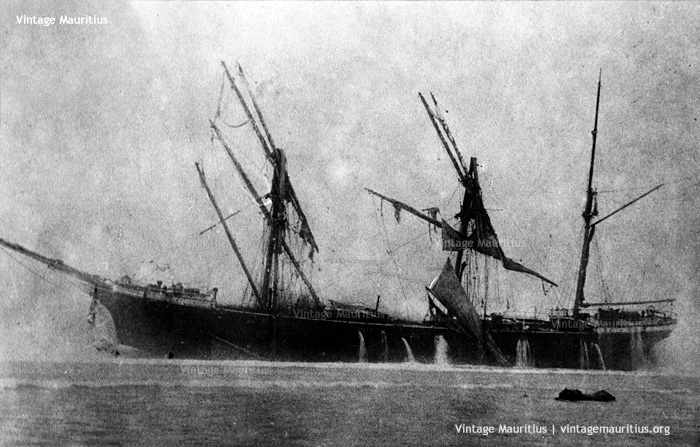
The Mauritian Ocean Territory floor counts as much as over 600 ships remains comprising of wreckage, retirement, and war victims. The story of the Dalblair is another unfortunate shipwreck that occured in 1902.
The “Dalblair” was a steel ship of 1474 tons built in 1895 in Scotland (town of Troon) by the Ailsa Shipbuilding Company. Crash reports mention that the vessel left Cardiff for Mauritius with a cargo of coals on the 14th November 1901. After 82 days at sea, on the 4th of February the ship reached the south east seas of Mauritius and was moving in a northern direction with a S.S.W wind. There was no land in site yet and the vessel was about 90 miles from the Ile aux Fouquets Lighthouse.
Unfortunately in the meantime an unforseen cyclone was also approaching and the change in weather took the captain by surprise. Barometers used weren’t precise enough to predict the calamity. The wind and the seas were so rough that it became very difficult for the crew to manage. It is said that the atmosphere was so thick that the length of the vessel could not be seen. In an attempt to lower the top sail, the latter was blown away. This struggle continued till the next day until 8 a.m on the 5th of February when the ship was at the mercy of the winds and struck on the reefs at Pointe D’Esny (approximate geo-coordinates).
The situation became worse by the prevailing weather when the crew tried to launch a life-boat but ended up unsuccessfully. Out of the four life-boats, the other three were smashed due to the unstability of the ship. Distress rockets were launched but no boats could attend because of the prevailing cyclone. At 6 p.m of the same day, the crew succeeded to launch the one remaining life-boat with ten men on board. They took a line with them so that the boat could be hauled back by the remaining crew and continue the evacuation. Unfortunately soon after leaving the ship, the life-boat turned on its side and three men drowned at sea. The remaining seven men made it safely ashore.
The captain and the remaining crew stayed on board until the next morning (6th February). One of the crew, Christian Petersen, swam to the reefs with a life-buoy and a line to re-establish communication. This heroic act allowed the rest of the crew to get safely on to the reefs where they were then taken ashore in canoes by fishermen.

Conclusion of this unfortunate event somehow freed the captain and related crew from any guilt since neither the Observatory in Mauritius nor the onboard barometers managed to predict the coming of this cyclone. The remains of the wreck site is still visible today in 2015 even though little by little corrosion and weather conditions are consuming what is left of this vessel.

Pointe D’Esny – Ship Wreck of the Dalblair – 1902, by vintagemauritius.org




